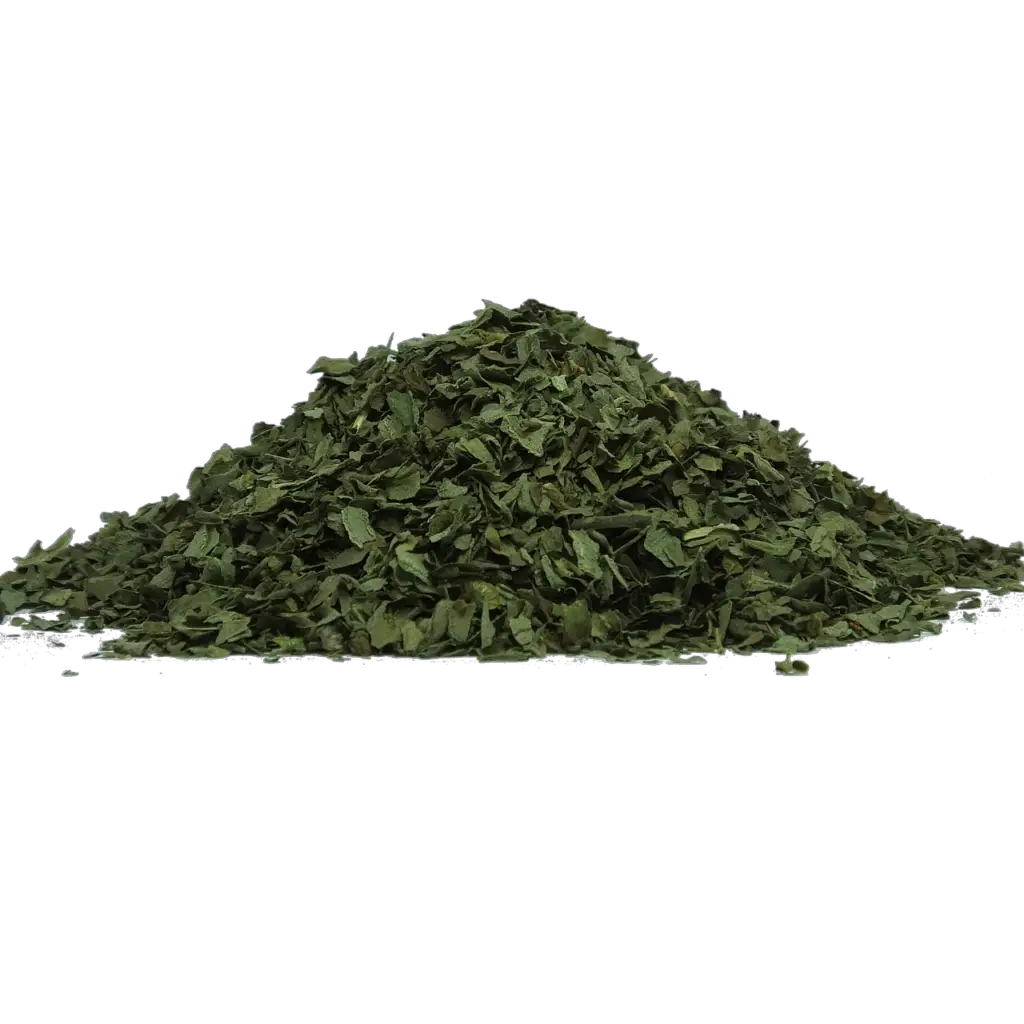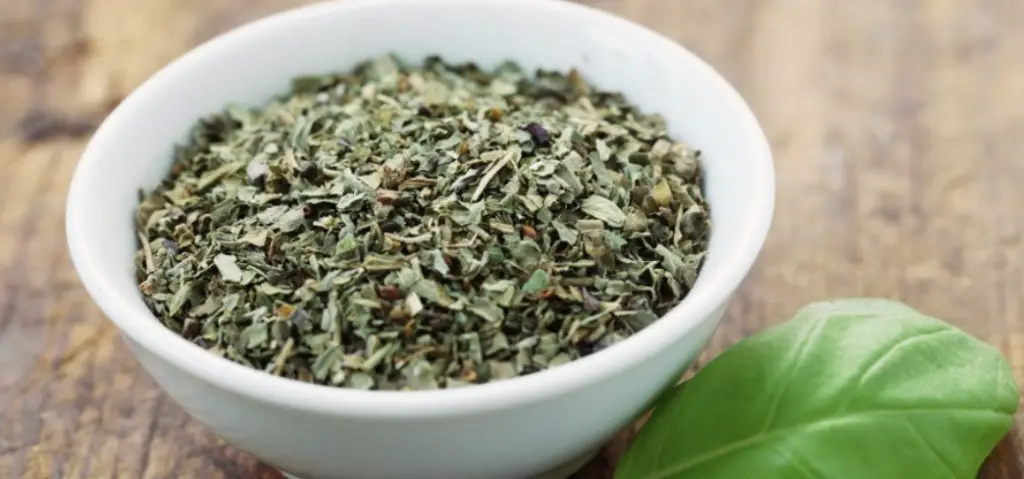
Drying fresh basil is a delightful way to extend the life of this aromatic herb, ensuring you can savor its vibrant flavors year-round. This introductory guide will navigate you through the straightforward process, from the initial washing of the leaves to the careful oven-drying technique that locks in the essence of basil. We’ll also cover the best practices for storing your dried basil, keeping it aromatic and ready to enhance your culinary creations. Whether you’re a seasoned chef or a gardening enthusiast, mastering the art of drying basil will bring a touch of summer to your dishes, regardless of the season.
What Is Basil
Basil is a fragrant, versatile herb belonging to the mint family, revered in culinary traditions worldwide. Characterized by its lush green leaves and distinct sweet, slightly peppery flavor, basil is a staple in dishes like pesto, salads, and pasta. Beyond its culinary uses, basil is celebrated for its medicinal properties, including anti-inflammatory and antioxidant benefits, making it a cherished herb in gardens and kitchens alike.
Why Dry Basil?
Preserving the essence of basil beyond its peak season is a culinary endeavor many undertake. While drying basil does extend its usability, it’s important to note that dried basil differs in intensity and flavor profile from its fresh counterpart, offering a more potent taste but not the exact freshness. For those seeking to capture basil’s garden-fresh zest, consider alternative preservation methods:
- Whip up and freeze batches of pesto, whether you stick to the classic Genovese recipe or venture into creative variations like broccoli pesto. Having these flavor-packed pesto cubes on hand can elevate meals year-round.
- Freezing whole basil leaves is a straightforward method to lock in freshness, making it easy to add a burst of summer to dishes even in the colder months.
- Crafting herb bombs by finely chopping basil and freezing with a little water or oil transforms the herb into ready-to-use flavor enhancers, minimizing waste and adding convenience to your cooking routine.

How To Dry Fresh Basil
Dehydrator
To dry basil using a dehydrator, set the temperature to between 95-115ºF (35-46ºC). Arrange the basil in a single layer across the dehydrator racks, allowing it to dry thoroughly for 2-4 hours until it becomes crisp and fragile. Keep in mind that the specific drying time may vary based on your dehydrator’s model, the ambient humidity, and temperature conditions, so it’s important to monitor the basil’s progress closely.
In The Oven
To dry basil in the oven, adjust the temperature to its lowest setting, ideally around 170°F (75°C). Arrange the basil leaves in a uniform layer on a parchment-lined baking tray to ensure even drying and prevent sticking. Keep the oven door slightly open to allow moisture to escape, drying the leaves for approximately 2 hours, but make sure to inspect them every 30-45 minutes for even drying. If your oven supports a lower temperature range of 95-115ºF (35-46ºC), you can close the door, extending the drying time to 2-4 hours with periodic checks.
Air-Drying Basil
Air drying basil is a straightforward, albeit time-consuming, approach to preserving the herb. Gather the basil stems into petite clusters and suspend them inverted in a location that is warm, arid, and enjoys good airflow, yet is shielded from direct sun exposure. Allow the bunches to hang undisturbed for a few days, or until both the leaves and stems have thoroughly dried out.
Drying In An Air-Fryer
The versatility of the air fryer knows no bounds, making it perfect for drying basil in modest quantities. Start by setting the air fryer to 270℉. Arrange the basil leaves in a neat, single layer within the air fryer basket, ensuring they don’t overlap. Allow the basil to cook for 8 to 12 minutes, but keep a vigilant eye on the process. The leaves are prone to burning if left unattended, so careful monitoring is key to achieving perfectly dried basil.
Drying Basil In The Microwave
For those seeking a rapid and straightforward technique to dry basil, utilizing the microwave is an excellent choice. Arrange the basil leaves on a plate lined with a paper towel, ensuring the plate is microwave-safe. Gently place another paper towel over the leaves to cover them. Proceed to microwave the basil in 30-second bursts, rearranging the leaves after each interval to ensure even drying. The total drying time, influenced by your microwave’s power and the leaf sizes, typically ranges from 1½ to 3 minutes.
How Can You Maximize The Flavour Of Dried Basil
Preserve the basil leaves in their whole, dried form to maintain their aromatic essence. Crushing the leaves too early can cause them to release their fragrant oils prematurely. For the fullest flavor, crush the leaves just before use. Always keep them in a container that’s airtight to ensure freshness and potency!

Using Dried Basil Leaves
Incorporate dried basil to elevate the taste of tomato-centric recipes such as pasta and pizza sauces, along with hearty soups. It’s a delightful addition to salad dressings, enhancing their flavor profile. Dried basil shines when used on roasted veggies, particularly potatoes, carrots, and squash, imparting a warm, aromatic essence. It’s also a key ingredient in crafting aromatic herb butters and Italian-style marinades. Embracing its Italian roots, basil is ideal for Mediterranean dishes, including fresh tomato salads and creamy burrata salads, adding a touch of summer to every bite.
How To Store Dried Basil
After drying your basil, it can be preserved in a compact jar for a span of 1 to 2 years. Opt to store the leaves intact or gently crumble them with your fingers for a crushed form. Be mindful that the basil’s vibrancy may diminish after 6 months. Utilizing an airtight vessel is crucial, with repurposed spice jars serving as an ideal option. For optimal freshness, position the jar in a cool, shadowed area, safeguarding the basil’s aromatic qualities.
How Much Fresh Basil To Dried
When substituting fresh basil with dried, the general ratio is 1:3, meaning use one part dried basil for every three parts fresh. So, if a recipe calls for 1 tablespoon of fresh basil, you’d use 1 teaspoon of dried basil to achieve a similar flavor profile.
FAQ
How Long Does Dried Basil Last
Dried basil typically retains its best quality for about 1 to 3 years when stored properly in an airtight container, in a cool, dark place. However, it can lose potency over time, so it’s best used within this timeframe for optimal flavor.
How Can You Tell When Basil Is Dried
Basil is fully dried when the leaves are crisp and crumble easily between your fingers. There should be no moisture or flexibility left in the leaves, indicating all the water content has been successfully removed, preserving the basil’s aroma and flavor.
When To Use Fresh vs Dried Basil
Use fresh basil for dishes where its vibrant color and flavor shine, like salads, pesto, and garnishes. Dried basil is best in cooked recipes like sauces and stews, where it infuses the dish with flavor throughout the cooking process.
Do I Need To Blanch Basil Before Drying
Blanching basil before drying is not necessary. Drying basil directly preserves its essential oils and flavor. Blanching is typically used for freezing basil, helping retain color and freshness, but for drying, simply wash, dry, and proceed to your chosen drying method.
